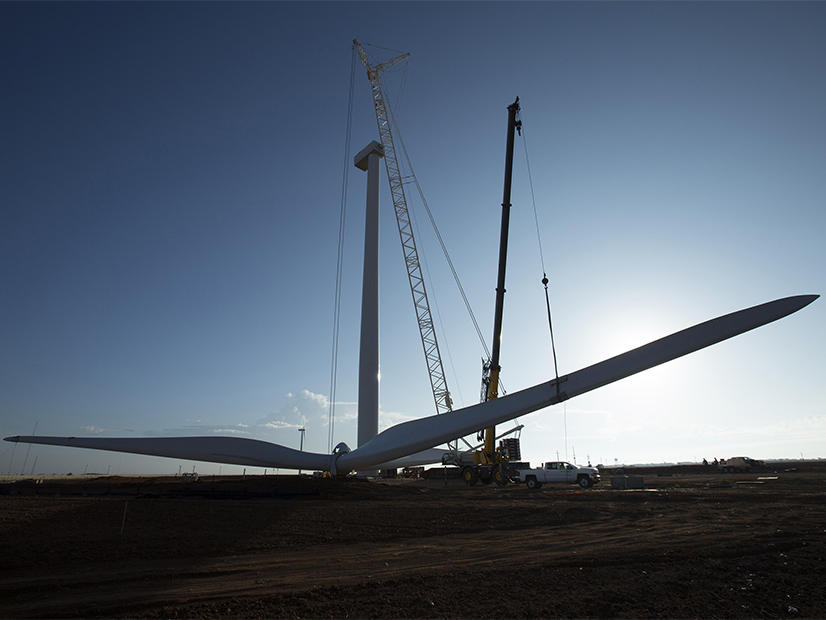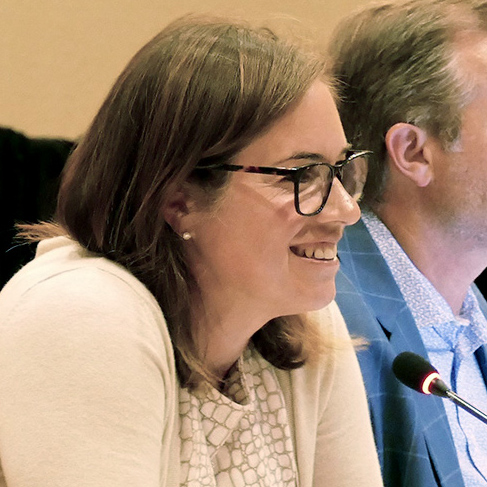
FERC has rejected SPP tariff revisions that would help transmission owners continue to self-fund network upgrades to interconnect generators.
FERC last week rejected SPP tariff revisions that would help transmission owners continue to self-fund network upgrades to interconnect generators (ER22-2968).
The commission found in a 3-1 decision on April 14 that SPP had not demonstrated that its proposed pro forma facilities service agreement and associated tariff revisions were just and reasonable and not unduly discriminatory or preferential (ER22-2968).
The grid operator sought approval of a proposal to allow TOs to self-fund the upgrades and recover their costs and a return on investment from an interconnection customer.
American Clean Power Association, Advanced Power Alliance, the Solar Energy Industries Association, the Natural Resources Defense Council and the Sustainable FERC Project all intervened against the revisions. They said the self-funding would heap costs on generation developers if they didn’t pay for the upgrades themselves.
FERC said SPP’s proposal ran counter to Order 2003, which established standard interconnection procedures to limit opportunities for transmission providers to favor their own generation and facilitate market entry for generation competitors by reducing interconnection costs and time.
The commission said the revisions could lead to “greater uncertainty” for interconnection customers that might not elect to a TO’s initial funding for upgrades, but then reverse course near the study process completion. It agreed with the clean energy advocates’ argument that such circumstances could lead to late-stage withdrawals and delays in administering the generator interconnection queue, further undermining Order 2003’s goals.
SPP and Xcel Energy subsidiary Southwestern Public Service contended that a non-binding indication provides an interconnection customer advance notice that a TO intends to self-fund prior to negotiation of generator interconnection. They also noted that FERC approved MISO’s request to require TOs to make binding self-funding decisions before GIA negotiations begin.
FERC disagreed, saying the non-binding self-funding election means a TO can make a choice when the study process begins and then do the opposite. The commissioners said they accepted MISO’s revisions to add deadlines by which TOs must make both non-binding and binding elections before the GIA negotiations. They said SPP’s proposal includes only the non-binding indication provision.
“Having more information earlier is beneficial not harmful,” the commission wrote. “By denying an earlier indication of the transmission owner’s potential election, interconnection customers will be denied access to information at an earlier stage under the tariff. That denial of information actually creates uncertainty; it does not protect against it.”
Commission Nixes PRM Waivers
The commission on Monday also rejected SPP tariff revisions that would allow load-responsible entities (LREs) to obtain two-year exemptions from deficiency payments assessed for not meeting the grid operator’s new resource adequacy requirement, finding the grid operator had not demonstrated the proposal was just and reasonable (ER23-636).
The commission found the RTO’s proposal would undermine the structure of deficiency payments, set out in a 2018 filing to establish the resource adequacy requirement. LREs unable to meet the requirement are subject to a deficiency payment equal to the payment amount multiplied by the cost of new entry and a multiplication factor of the footprint’s excess capacity relative to the planning reserve margin (PRM).
“The complete elimination of the deficiency payment, even under the criteria of the proposed exemption process, removes the incentive for LREs to procure the capacity needed to collectively ensure that the SPP footprint maintains resource adequacy,” the commission wrote.
FERC has said SPP’s proposed deficiency payment “provides a signal to LREs to plan ahead to satisfy the [resource adequacy requirement].”
The commission found that while the proposed exemption is limited to two hours each time the grid operator increases the PRM, LREs would be able to seek the exemption each time there is an increase. It said that, were SPP to make consecutive increases, deficient LREs with exemptions wouldn’t be required to meet their resource adequacy obligations for an extended time.
FERC also said the proposed tariff language is not clear as to how the proposed exemption process would work.
 Denise Buffington, Evergy | © RTO Insider LLC
Denise Buffington, Evergy | © RTO Insider LLCSPP last year increased the PRM to 15% from 12% for the 2023 season and filed the proposed exemption language. (See SPP Board Bypasses Stakeholders on PRM Obligation Exemptions.)
Evergy’s Denise Buffington, who warned last October that the proposal would fail at FERC, suggested SPP’s future tariff revisions should allow more time for compliance.
“It takes time to get steel in the ground, and if SPP continues to increase the performance or planning reserve margin on an annual basis, we’re never going to be able to meet it,” she said during a Resource and Energy Adequacy Leadership Team meeting Thursday. “When we think about setting out new requirements, we have to do them far enough in the future so that load-responsible entities can actually comply.”



